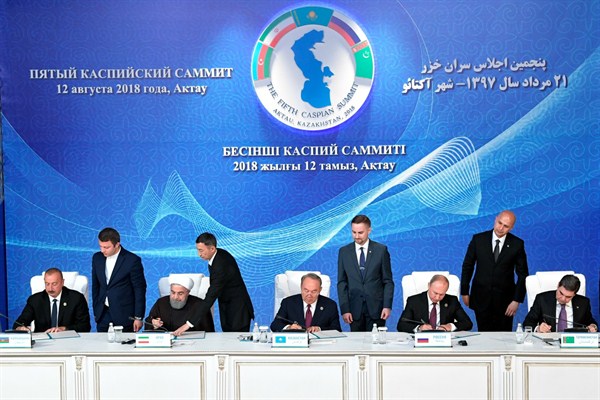On Aug. 12, leaders of the five Caspian Sea littoral states—Russia, Iran, Kazakhstan, Azerbaijan and Turkmenistan—gathered in the Kazakh port city of Aktau to sign the Convention on the Legal Status of the Caspian Sea. The agreement ended decades of uncertainty over the Caspian Sea’s status, clarifying the boundaries between each party’s territorial waters. And while the agreement left open the key question of ownership over the rich oil and gas deposits lying under the Caspian’s seabed, it provides a framework for these five countries to work out arrangements for joint exploration and drilling, as well as long-stalled pipeline projects. In an email interview, Mamuka Tsereteli, a senior research fellow at the Central Asia-Caucasus Institute in Washington, D.C., discusses the significance of the deal.
World Politics Review: What is the relevant history of the dispute over the Caspian Sea’s status? Given that backdrop, what is the significance of the agreement reached last month between the five Caspian littoral states?
Mamuka Tsereteli: The Caspian Sea is the largest body of water in the world that is not naturally connected to the open seas. This technically makes the Caspian a lake, but because of its size and its salty waters, it has been called a sea since ancient times. During the Soviet period, two Caspian littoral states—the Soviet Union and Iran—shared the sea for navigational as well as economic development purposes, though the Soviets had dominant control over it.

